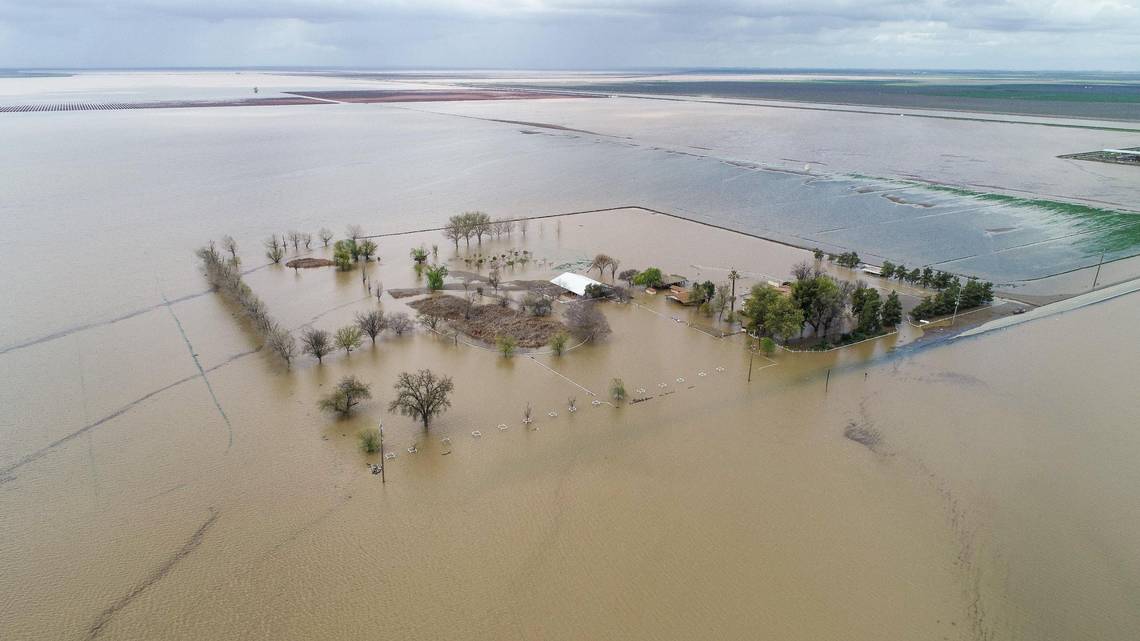Table of Contents
ToggleIntroduction:
Tulare Lake, one of California’s most important ecosystems, is making a comeback after years of decline. This resurgence is due to record-breaking snowpack and storms that have caused the lake to reappear. While this may seem like good news for a drought-stricken state, the flooding has caused unexpected challenges for local communities. In this article, we will explore the re-emergence of Tulare Lake and the challenges faced by local communities, as well as the adaptation strategies being employed to deal with flooding.
The Re-Emergence of Tulare Lake:
The re-emergence of Tulare Lake is due to a record-breaking snowpack in the Sierra Nevada mountains, which has led to a significant increase in water levels. As the snowpack melts, the water is finding its way into the Tulare Basin, where Tulare Lake is located.
The lake, which used to cover an area of over 570 square miles, is now beginning to fill again. However, this has caused unexpected challenges for local communities, as the flooding is disrupting crop growth and causing damage to homes and infrastructure.
The Challenges Faced by Local Communities:
The re-emergence of Tulare Lake has caused unexpected challenges for local communities, particularly farmers. The flooding has caused damage to crops and infrastructure, and many farmers are struggling to protect their land from overflowing banks.
Furthermore, the flooding has caused damage to homes and infrastructure in nearby towns, such as Corcoran, Allensworth, and Alpaugh. Many roads have been closed, and evacuation warnings have been issued.
The flooding is also highlighting the need for improved infrastructure and planning to deal with extreme weather events. Jeffrey Mount, a senior fellow at the Water Policy Center of the Public Policy Institute of California, called the re-emergence of the lake an “unfolding natural disaster,” as there is no current way to handle it with the existing infrastructure.
Adaptation Strategies for Dealing with the Flooding:
Local communities are employing a variety of adaptation strategies to deal with the flooding caused by the re-emergence of Tulare Lake. One approach is to temporarily allow flood waters to flow over agricultural land, which can help to refill critical groundwater aquifers and reduce the effects of subsidence of the valley floor.
Other strategies include improving infrastructure and planning for extreme weather events. This includes developing floodplain maps, improving drainage systems, and building better levees and flood walls.
There is also a need to promote sustainable agricultural practices, such as cover cropping and conservation tillage, to reduce soil erosion and promote healthy soil and water quality.
Conclusion:
The re-emergence of Tulare Lake is both a promising development and a challenge for California’s Central Valley. While the increased water levels are providing critical habitat for wildlife and supporting the region’s agricultural economy, the flooding is causing unexpected challenges for local communities.
However, by employing adaptation strategies and promoting sustainable practices, we can work to mitigate the effects of the flooding and promote long-term resilience in the region. This includes improving infrastructure, promoting sustainable agriculture, and planning for extreme weather events.
As climate change continues to increase precipitation extremes, it is important that we continue to adapt to the “precipitation paradox” and protect life and property for future generations.
FAQs
Q: Why did Tulare Lake dry up?
A: Tulare Lake dried up due to a combination of factors, including water diversions, soil erosion, and climate change. The lake was once an important ecosystem and provided critical habitat for wildlife, but over time, the lake’s water levels declined, leading to its eventual disappearance.
Q: When was Tulare Lake dried up?
A: Tulare Lake began to dry up in the late 19th century (1880s) due to increased water diversions and soil erosion. By the early 20th century, the lake had largely disappeared, leaving behind a dry lakebed. However, the recent record-breaking snowpack and storms have caused the lake to reappear.
Q: How deep was/is Tulare Lake?
A: Tulare Lake was once a large freshwater lake with a maximum depth of 50 feet (15 meters). However, due to water diversions and other factors, the lake’s water levels declined over time, eventually leading to its disappearance in the early 20th century.
Q: Where is Tulare Lake?
A: Tulare Lake is located in the southern Central Valley of California, to the south of the San Joaquin Valley. The lake was once a critical ecosystem and provided important habitat for wildlife, as well as supporting the region’s agricultural economy.
Q: What happened to Tulare Lake?
A: Tulare Lake disappeared in the early 20th century due to water diversions, soil erosion, and other factors. However, the recent record-breaking snowpack and storms have caused the lake to reappear, leading to unexpected flooding and challenges for local communities.
Q: What is the status of Tulare Lake today?
A: Tulare Lake has re-emerged after years of decline, thanks to record-breaking snowpack and storms in recent years. While this may seem like good news, the unexpected flooding has caused challenges for local communities, particularly farmers.
Q: Are there fish in Tulare Lake?
A: Historically, Tulare Lake was home to a diverse range of fish species, including catfish, salmon, and trout. However, due to the lake’s disappearance in the early 20th century, many of these species have disappeared. It remains to be seen whether fish will return to the lake with its re-emergence.
Q: What is the history of Tulare Lake?
A: Tulare Lake has a long and complex history, dating back thousands of years to when it was an important ecosystem for Native American communities. In the 19th century, the lake became an important source of water for agriculture, leading to increased water diversions and soil erosion. By the early 20th century, the lake had largely disappeared, but recent record-breaking snowpack and storms have caused it to re-emerge.








1 thought on “The Resurgence of Tulare Lake: A Tale of Unexpected Challenges and Adaptation”
Pingback: Exploring the Mysteries of Tulare Lake: Contaminants, Toxins, and the Resurgence of Wildlife - Sustainability Awakening